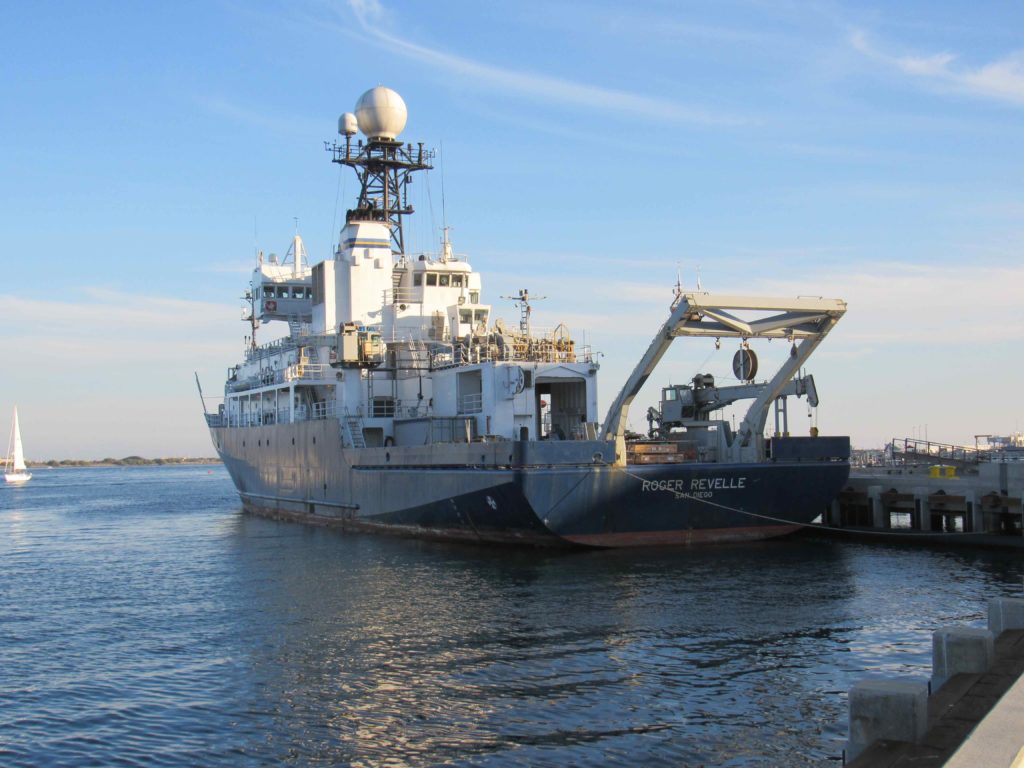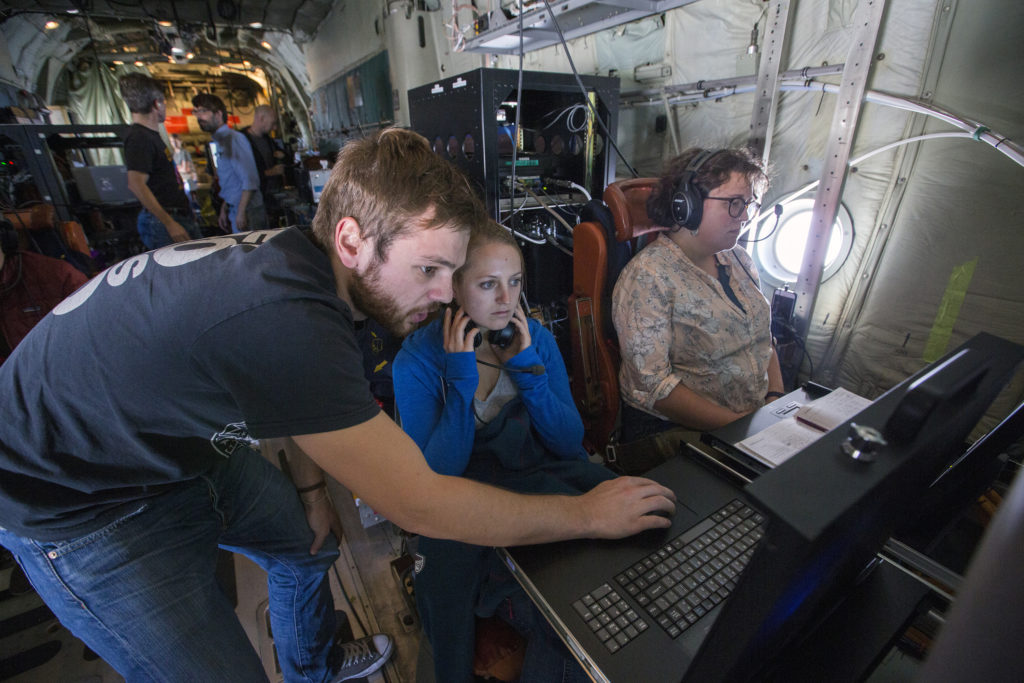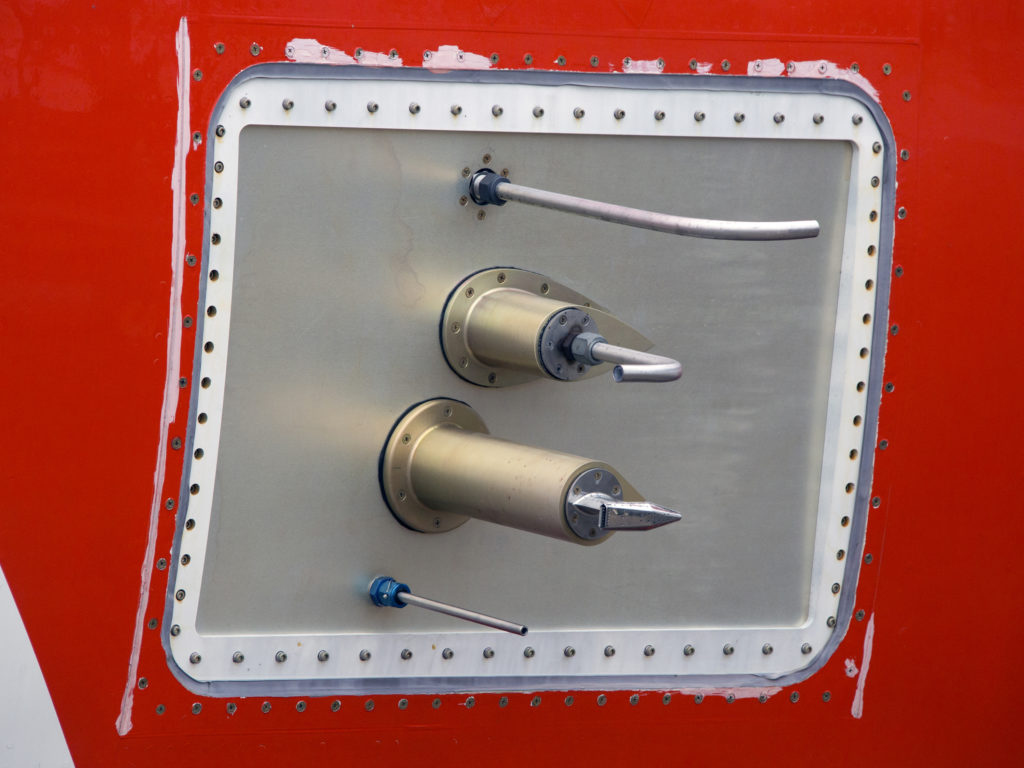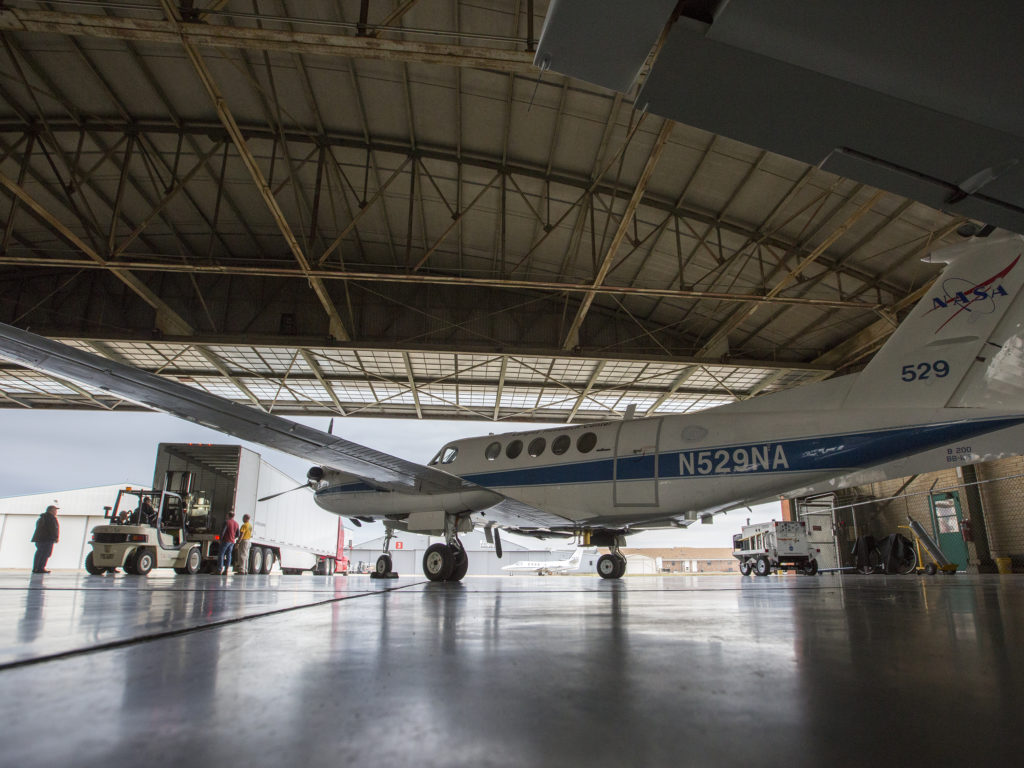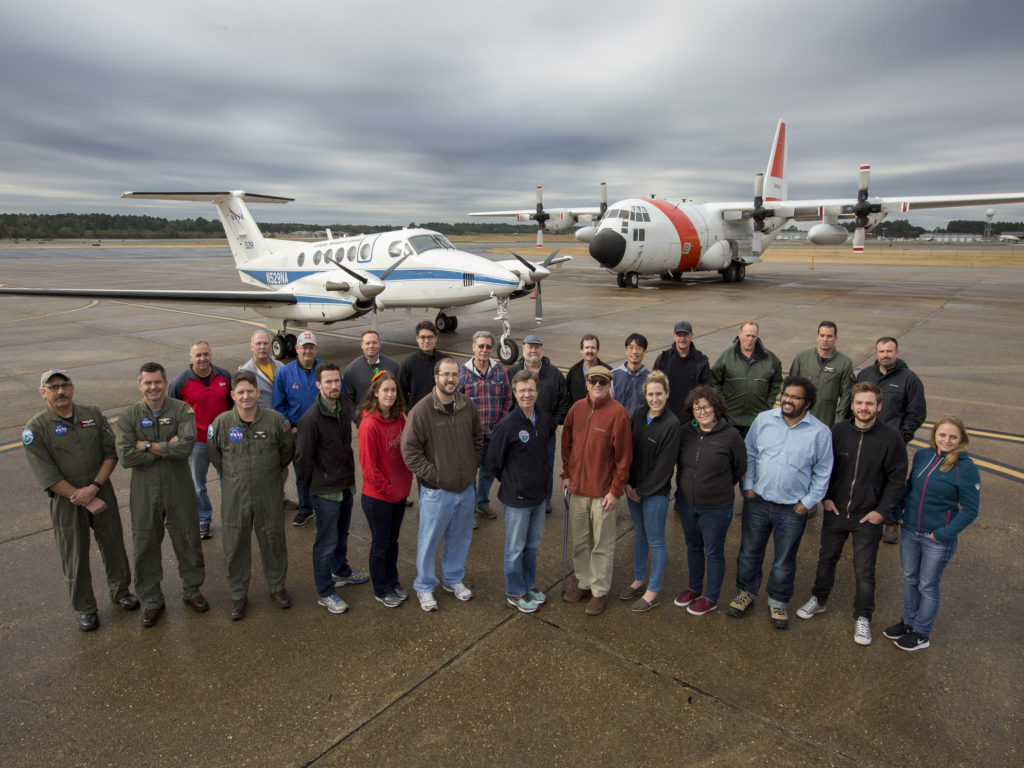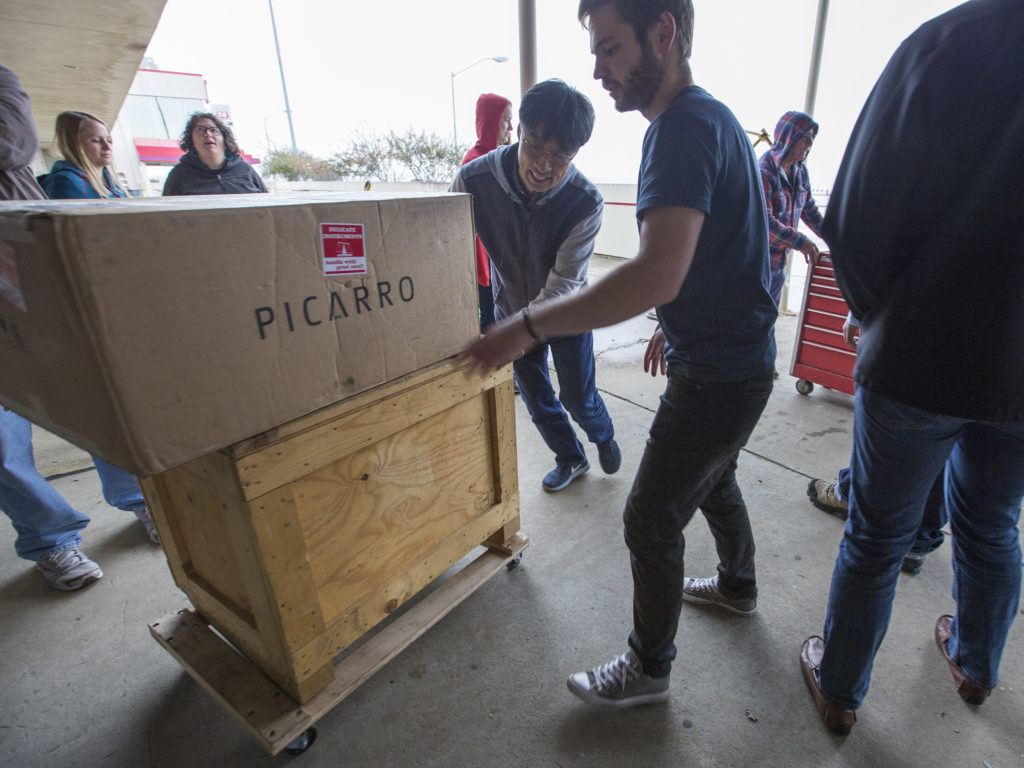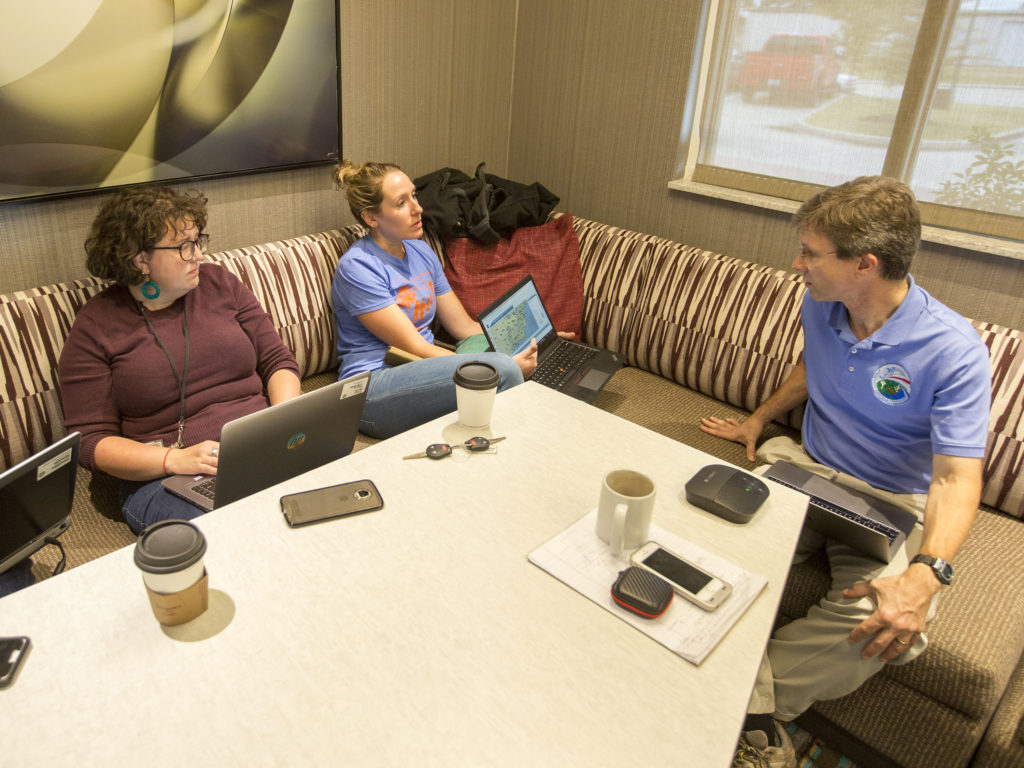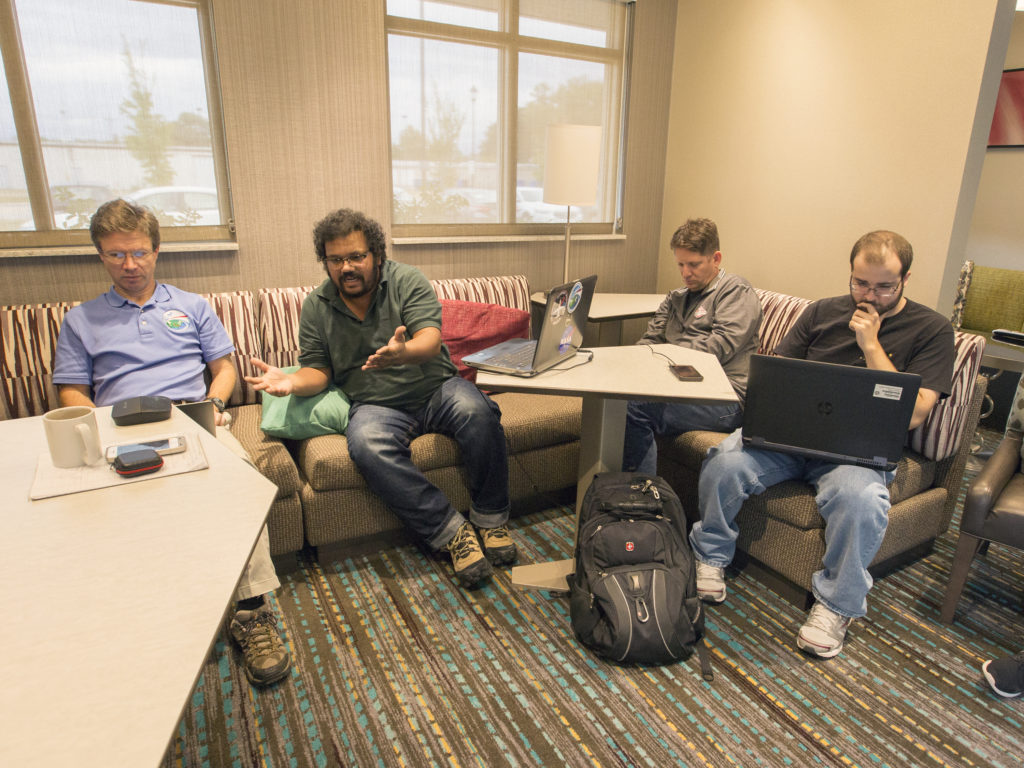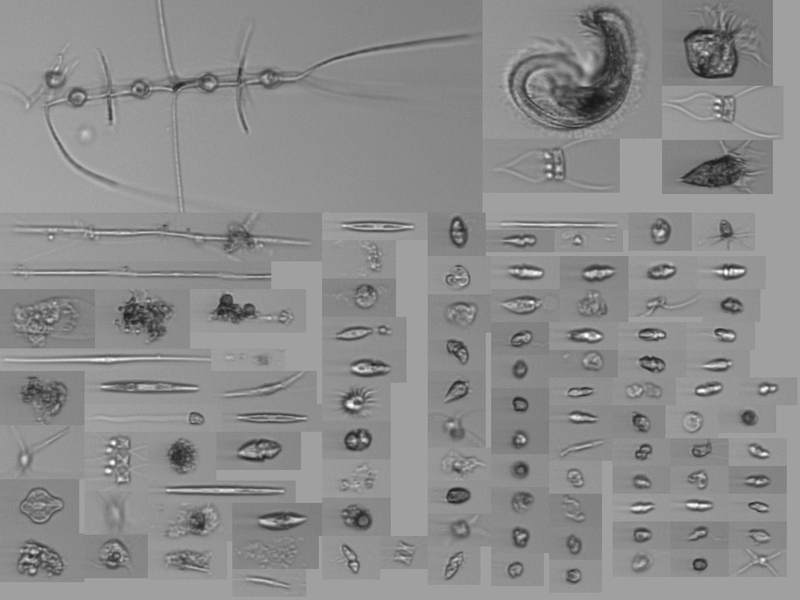
by Eric Lindstrom / Eastern Tropical Pacific Ocean /
Eric Lindstrom is Physical Oceanography Program Scientist at NASA Headquarters. For the last 20 years, his primary job has been supporting NASA satellite missions related to measuring physical characteristics of the ocean (principally, temperature, salinity, sea level, and winds) and supporting the oceanographers that generate knowledge from such data. He was recently aboard the Research Vessel (R/V) Roger Revelle in the Pacific Ocean as part of the Salinity Processes in the Upper Ocean Regional Study-2 (SPURS-2) field campaign. SPURS is undertaking oceanographic field experiments to further understand the essential role of the ocean in the global water cycle using a plethora of oceanographic equipment and technology, including salinity-sensing satellites, research cruises, floats, drifters, autonomous gliders and moorings.
What lives below us? This is a question that mariners have wondered for ages. We no longer think of the darker answers to this question—the sea monsters, the Kraken, the great whales. For most aboard, the thinking is akin to a fisherman’s—tuna, mahimahi, sharks. But for SPURS-2, Sophie Clayton is answering this question in terms of microscopic life, namely diverse phytoplankton (plant life) and zooplankton (animal life).
Sophie is an oceanographer interested in understanding how ocean currents at all scales shape the distribution and biodiversity of phytoplankton. She uses a combination of numerical models, large-scale data analysis, and targeted observations made at sea. Her Ph.D. in Physical Oceanography from the Massachusetts Institute of Technology/Woods Hole Oceanographic Institution Joint Program. Now she is a postdoctoral fellow at the University of Washington, working extensively with observations of phytoplankton distributions made using an Imaging FlowCytobot (IFCB) that analyzes discrete samples with video and a hyperspectral optical sensor for recording the continuous optical properties of the water.
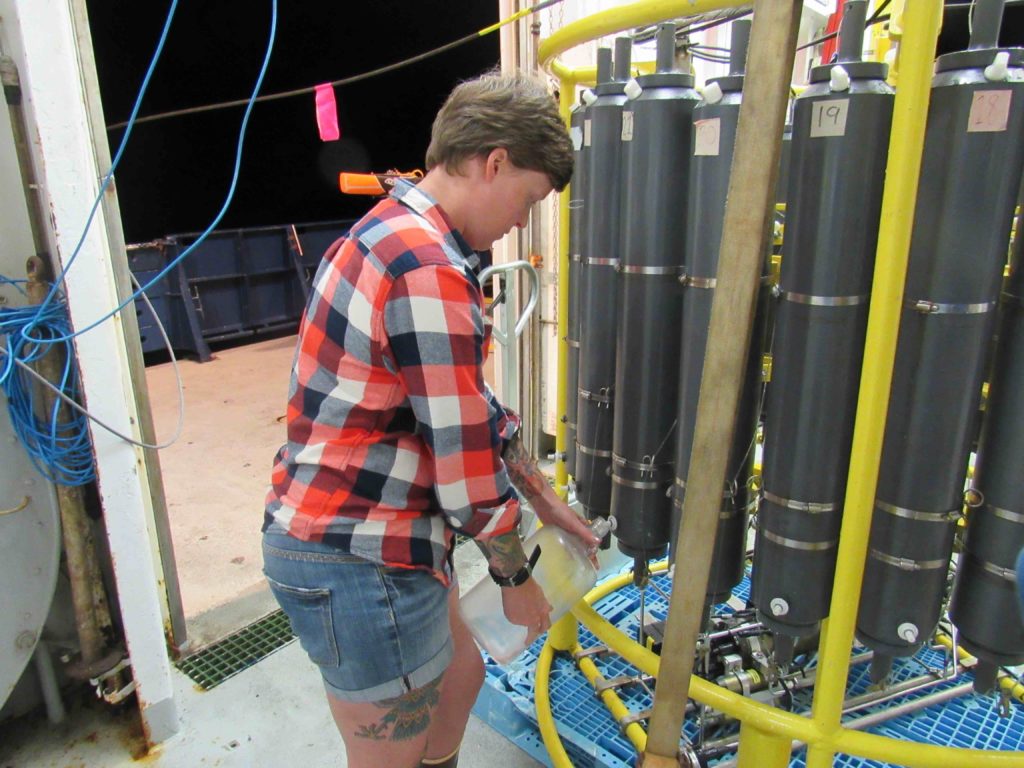
An IFCB is an instrument that is used primarily to count cells, but it also can detect and record information on different properties of the cells that it counts. A water sample is channeled into a thin stream that is passed in front of a laser, and the scatter and fluorescence from each cell that passes along the stream is detected and recorded. In the IFCB, the camera is triggered to take a picture only when fluorescence over a threshold value is detected. This means that the instrument only takes pictures of cells that contain chlorophyll. The images are then stored for analysis back on shore. In addition to the images that are collected, we use the optical properties of the cells (fluorescence and scatter) in the analysis.
Sophie’s work is enabled by surface water collected from the salinity snake while we are underway or from bottle samples taken during Conductivity- Temperature-Depth (CTD) casts. Similar mosaics are made from surface water every 20 minutes. Overall, there will be close to 2,000 mosaics of cellular life to examine. Samples are also held for later DNA analysis.
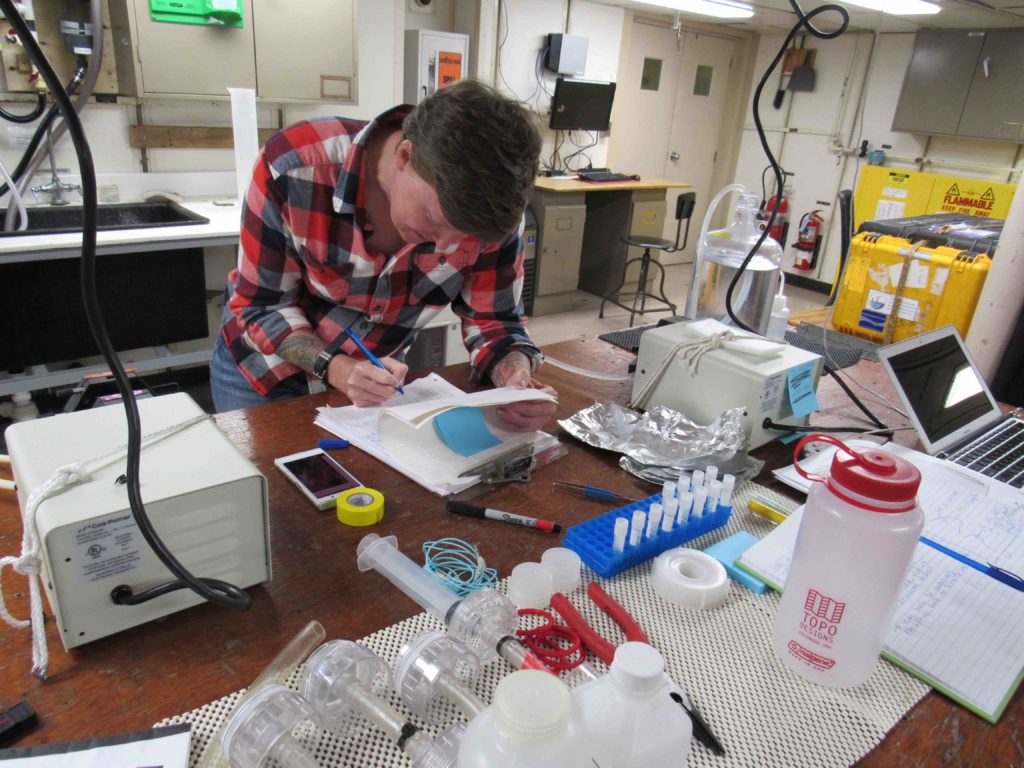
Out here, for the most part, the plankton are actually most abundant below the surface at 40-70 meters depth. Deeper down, below the surface layer mixed by the wind, life has better access to the chemical nutrients of the deep sea while still having enough light for photosynthesis. Plant life thrives in a layer that best balances the light and nutrient requirements. Of course, the grazing microscopic animals follow this layer closely. So Sophie is keen to collect water from this layer during our CTD casts. She can tell where to sample by optical properties also measured on CTD casts.
Understanding plankton abundance and diversity is a core requirement for ocean climate science. Phytoplankton are responsible for about half of all photosynthetic production on the planet. (Land plants are also responsible for about half.) It makes them a key part of the carbon cycle on the planet. Over long periods, phytoplankton can remove carbon from the upper ocean and return it to sediment for long-term sequestration. Over hundreds of thousands of years, phytoplankton act to reverse the greenhouse effect caused by pulses of carbon dioxide injected into the atmosphere by volcanoes or humans.

In a prior blog, I wondered about the fate of life in the sea. What would become of that abundant life with the continued impacts of ocean acidification, industrial fishing, and plastics pollution? Science struggles to make any predictions. Oceanographers particularly, because of our close affinity and observation of the sea, hope that the assaults of society on the sea do not damage its inherent ability to stabilize and heal the rapid changes overtaking the planet. Our baseline understanding of the complex marine ecosystem is still quite primitive. The kind of “survey” work that Sophie is undertaking is absolutely necessary to further our understanding of the biogeography of the ocean and how it is changing. Let’s hope she has a successful career!


